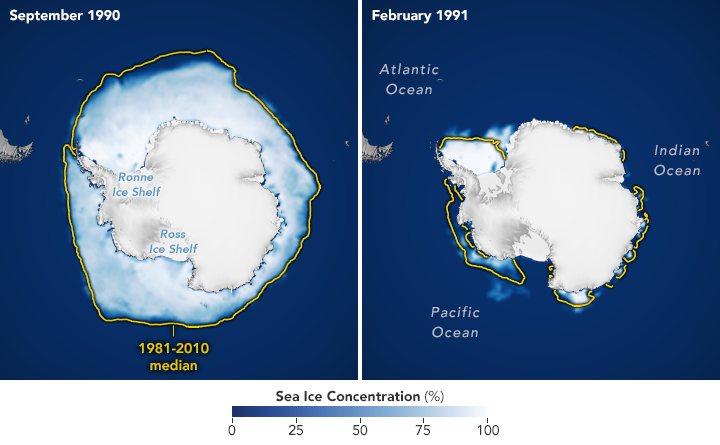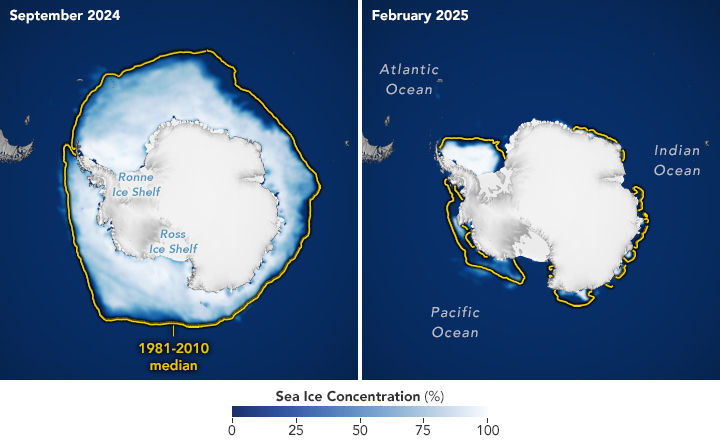As Recently As 30 Years Ago, Greenland Thawed While Antarctica Remained Largely Untouched By Warming. Not Any More . .
As recently as the 1990s, when the Greenland Ice Sheet and the rest of the Arctic region were measurably thawing under the climatic blowtorch of human-caused global warming, most of Antarctica’s vast ice cap still seemed securely frozen. But not anymore. Physics is physics. As the planet heats up, more ice will melt at both poles, and recent research shows that Antarctica’s ice caps, glaciers and floating ice shelves, as well as its sea ice, are just as vulnerable to warming as the Arctic.
Both satellite data and field observations in Antarctica reveal alarming signs of a Greenland-like meltdown, with increased surface melting of the ice fields, faster-moving glaciers and dwindling sea ice. Some scientists are sounding the alarm, warning that the rapid “Greenlandification” of Antarctica will have serious consequences, including an accelerated rise in sea levels and significant shifts in rainfall and drought patterns.
EDIT
Thirty years ago, undergraduate students were told that the Antarctic ice sheets were going to be stable and that they weren’t going to melt much, said Ruth Mottram, an ice researcher with the Danish Meteorological Institute and lead author of a new paper in Nature Geoscience that examined the accelerating ice melt and other similarities between changes in northern and southern polar regions. “We thought it was just going to take ages for any kind of climate impacts to be seen in Antarctica. And that’s really not true,” said Mottram, adding that some of the earliest warnings came from scientists who saw collapsing ice shelves, retreating glaciers and increased surface melting in satellite data
EDIT


EDIT
Mottram, the new paper’s lead author, said a 2022 heatwave that penetrated to the coldest interior part of the East Antarctic Ice Sheet may be another sign that the continent is not as isolated from the rest of the global climate system as once thought. The extraordinary 2022 heatwave was driven by an atmospheric river, or a concentrated stream of moisture-laden air. Ongoing research “shows that there’s been an increase in the number of atmospheric rivers and an increase in their intensity,” she said. Antarctica is also encircled by a powerful circumpolar ocean current that has prevented the Southern Ocean from warming as quickly as other ocean regions. But recent climate models and observations show the buffer is breaking down and that relatively warmer waters are starting to reach the base of the ice shelves, she said. New maps detailing winds in the region show that “swirls of air from higher latitudes are dragging in all the time, so it’s not nearly as isolated as we always told when we were students,” she said.
EDIT
https://insideclimatenews.org/news/16102025/antarctica-greenlandification-ice-melt/

